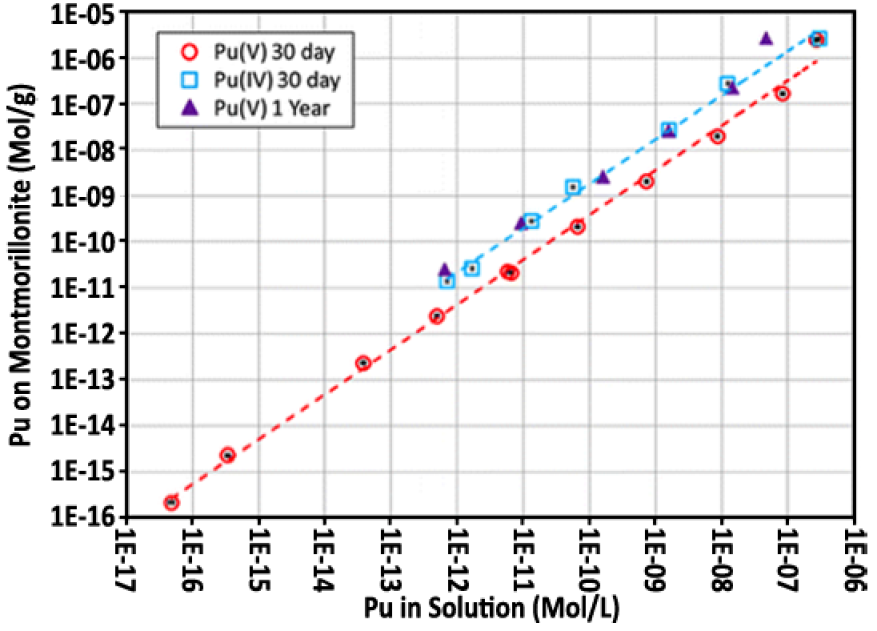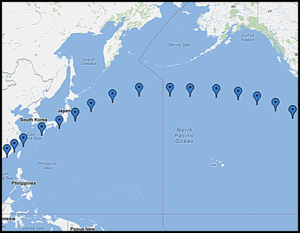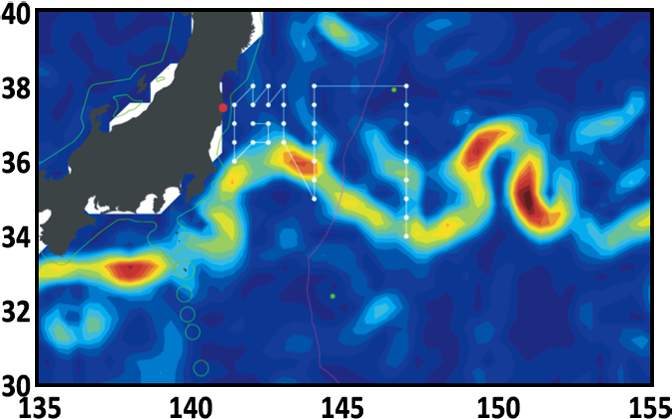AMS as a tool for monitoring the fate and transport of radionuclides in the environment
The production and testing of nuclear weapons, nuclear accidents, and authorized discharges have all contributed to a global legacy of radioactive contamination in the environment.
While radionuclides with relatively short half-lives present the most immediate impact to surrounding ecosystems and human health, long-lived species are also a major concern because of their persistence in the environment. For example, Pu-239 (t1/2 = 24,100 years) is of particular importance because of its high degree of radiotoxicity and significant input into the environment from weapons testing and contamination at production facilities. The ultra-sensitive nature of AMS (detection limit for 239Pu ~0.1 μBq) is ideally suited for environmental monitoring and fate and transport studies of Pu. CAMS is actively involved in several such projects.
Marshall Islands Program
Immediately after World War II, the United States created a Joint Task Force to develop a nuclear weapons testing program. From 1946 to 1958, as the site of the Pacific Proving Grounds, the U.S. tested 67 nuclear weapons in the Marshall Islands, including the largest nuclear test the U.S. ever conducted, Castle Bravo.
The U.S. Department of Energy (DOE) created the Marshall Islands Dose Assessment and Radioecology Program to provide technical support services and oversight for assessing the radioactive environment and its impact on the native Marshall Islands population. A significant component of this program is bioassay monitoring of Pu burdens in humans as well as environmental measurements of Pu. The ultra-low detection limit of AMS, which is ~500 times lower than the DOE standards for bioassay, provides the Marshall Islands Program a unique and important tool for executing its mission. For more information on the Marshall Islands Program visit [https://marshallislands.llnl.gov].
Pu Fate and Transport
The migration of Pu from contaminated sites is an important concern for the U.S. DOE. Despite several decades of study, our understanding of the environmental behavior of Pu is far from complete due to the wide array of factors which can significantly influence its mobility. These include Pu redox processes, colloid-facilitated transport processes, solubility effects, sorption/desorption rates and affinities for natural mineral surfaces, and interactions with natural organic matter (including bacteria). Development of reliable predictive transport models, which are important for risk assessments of both existing contaminated environments and the safety of long-term disposal of nuclear waste, necessitates a detailed understanding of the stability of Pu associated with colloids and accurate measurement of equilibrium constants (Kd) that govern sorprtion/desorption. It is well-known that Kd values do not always scale linearly from the relatively high concentration regimes accessible in traditional laboratory experiments to the trace concentrations encountered in real environmental conditions. Using AMS, we have been able to measure the Kd for Pu on a number of representative mineral phases (e.g., goethite, montmorillonite, etc.) at environmentally-relevant concentrations [Figure 1]. These measurements provide invaluable input parameters for improving transport models used to predict Pu migration from contaminated DOE sites.
Fukushima
The tsunami resulting from the March 11, 2011 To¯hoku earthquake triggered a catastrophic accident at the Fukushima Daiichi nuclear power plant that caused the release of radioactive elements into the environment. Some of these radioactive species (e.g., 131I, 134Cs, 137Cs) are of major concern because they present a hazard associated with radiological dose to surrounding plants, animals, and human populations. 129Iodine is another radioactive species that was released by the Fukushima nuclear accident. Owing to an extremely long radioactive half-life (15.7 Ma), 129I presents virtually no radiological hazard so it has understandably been given less focus thus far. It is nonetheless valuable to assess the environmental release of 129I for a number of reasons. First, 129I is a powerful tool for studying ocean transport and mixing processes. In addition to the long radioactive half-life of 129I, the long residence time (~245 ka) and relatively low bioavailability of iodine enable 129I to behave as a nearly conservative tracer in the ocean. The utility of 129I has been extensively demonstrated in many studies in which releases from the Sellafield and La Hague reprocessing plants were traced into the surrounding seas (e.g., Norwegian, Baltic, etc.) and further the North Atlantic Ocean. The Fukushima releases represent a similar, albeit less intense and more discrete, point source for tracing water mass movement in the Western Pacific Ocean.
Following the Fukushima nuclear accident CAMS has initiated several studies of 129I in the Pacific Ocean. First, we analyzed surface water samples collected from the container ship OOCL Tokyo that transited from Shanghai (China) to Long Beach (USA) during May 2011 [Figure 2].
These results [Table I] allowed us to establish a pre-Fukushima background of 129I in the Pacific, as well as observe an initial signal off the eastern coast of Japan associated with the Fukushima release. We then participated in a research cruise [Figure 3] with the R/V Ka`imikaio-Kanaloa (KOK) in June of 2011 that provided higher resolution and more near-shore sampling. The KOK sample measurements provide a robust quantification of the source term of 129I into the Pacific [Figure 4] as well as establish relationships to other radioisotopes (e.g., 137Cs) both of which are essential to fully exploit 129I as a tracer for the movement and mixing of water masses in the Pacific.










